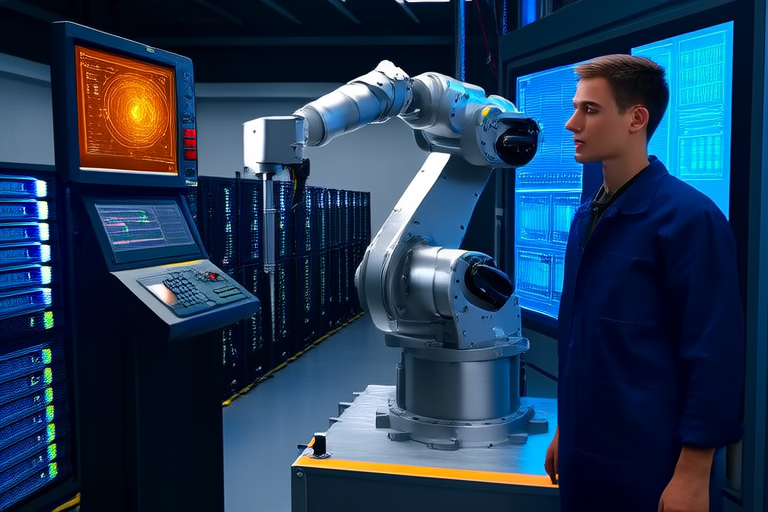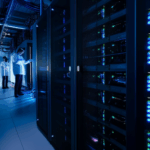“`html
Revolutionizing Industries: The Transformative Power of AI Applications
Introduction
Artificial Intelligence (AI) has emerged as a cornerstone of modern technology, fundamentally reshaping the way we live and work. From automating mundane tasks to enabling sophisticated decision-making, AI is driving unprecedented innovation across various sectors. This article explores the transformative power of AI applications, highlighting how they are revolutionizing industries by enhancing productivity, improving decision-making, and fostering new opportunities for growth.
The rapid advancement of AI technologies has made it possible to automate complex processes, analyze vast amounts of data, and create intelligent systems capable of learning and adapting. As these technologies continue to evolve, their impact on industries will only grow, promising a future where human creativity and machine intelligence work hand-in-hand to solve some of the world’s most pressing challenges.
Key AI Technologies and Their Applications
Machine Learning (ML)
Machine Learning (ML) is at the forefront of AI, enabling computers to learn from data and improve their performance over time. In healthcare, ML algorithms can analyze medical images to detect diseases more accurately than human radiologists. For instance, Google’s DeepMind has developed an AI system that can diagnose eye diseases with near-perfect accuracy. In finance, ML is used for risk assessment, fraud detection, and algorithmic trading. Banks like JPMorgan Chase have implemented ML models to predict market trends and optimize investment strategies. In manufacturing, ML helps predict equipment failures, reducing downtime and maintenance costs.
Natural Language Processing (NLP)
Natural Language Processing (NLP) enables machines to understand, interpret, and generate human language. It has transformed customer service through the use of chatbots and virtual assistants, which can handle routine inquiries and provide personalized support. Companies like Amazon and Apple leverage NLP to enhance voice-activated devices, making them more intuitive and user-friendly. In content creation, NLP powers tools that can summarize articles, generate reports, and even write news stories. Additionally, NLP facilitates real-time language translation, breaking down communication barriers and enabling global collaboration.
Computer Vision
Computer Vision allows machines to interpret and understand visual information from the world around them. Retailers use computer vision to track customer behavior, optimize store layouts, and manage inventory. For example, Walmart employs AI cameras to monitor shelf stock levels, ensuring products are always available. In security, facial recognition systems powered by computer vision help identify individuals and prevent unauthorized access. Autonomous vehicles rely on computer vision to navigate roads safely, recognizing pedestrians, vehicles, and other obstacles. Object detection algorithms enable drones to deliver packages efficiently, while facial recognition systems enhance security in airports and public spaces.
Robotics and Automation
AI-powered robots are revolutionizing manufacturing, warehouse operations, and even surgical procedures. In manufacturing, robots equipped with AI can perform repetitive tasks with precision, increasing production efficiency and reducing errors. Companies like Tesla and Foxconn use AI-driven robots to assemble components and test products. In warehouses, automated guided vehicles (AGVs) and robotic arms streamline order fulfillment, reducing labor costs and improving delivery times. In healthcare, surgical robots assist doctors in performing minimally invasive procedures, leading to faster recovery times and fewer complications.
Industry-Specific Impact
Healthcare
In healthcare, AI is transforming diagnostics, personalized medicine, and patient care. Medical imaging technologies, such as MRI and CT scans, generate vast amounts of data that can be analyzed using AI to detect diseases earlier and more accurately. For instance, AI algorithms can identify early signs of cancer in mammograms, helping doctors make more informed treatment decisions. AI also plays a crucial role in drug discovery, speeding up the process of identifying potential treatments and bringing them to market faster. Telemedicine platforms powered by AI allow patients to consult with doctors remotely, improving access to healthcare services, especially in underserved areas.
Finance
The finance industry is increasingly leveraging AI to enhance risk management, fraud detection, and algorithmic trading. Financial institutions use AI models to assess creditworthiness, predict market trends, and detect fraudulent transactions. For example, Mastercard uses AI to monitor transaction patterns and flag suspicious activities in real-time. Algorithmic trading systems powered by AI can execute trades faster and more accurately than human traders, improving profitability. AI also supports financial advisory services, offering personalized recommendations based on individual financial goals and risk tolerance.
Retail
Retailers are harnessing AI to optimize inventory management, personalize customer experiences, and enhance supply chain efficiency. Recommendation engines powered by AI analyze customer browsing and purchase history to suggest products tailored to individual preferences. Amazon’s recommendation system, for example, significantly boosts sales by suggesting complementary items during checkout. Automated checkout solutions, such as those used in cashier-less stores, reduce wait times and improve customer satisfaction. AI also optimizes supply chains by predicting demand and managing inventory levels, reducing waste and improving profitability.
Manufacturing
In manufacturing, AI is improving production efficiency, predictive maintenance, and quality control. AI-powered sensors and cameras monitor equipment performance in real-time, detecting anomalies and predicting failures before they occur. This proactive approach reduces downtime and extends the lifespan of machinery. Quality control systems powered by AI ensure products meet exacting standards, reducing defects and improving customer satisfaction. AI also enhances robotics and IoT integration, enabling smarter factories that can adapt to changing demands and optimize resource usage.
Transportation
AI is advancing autonomous vehicles, optimizing logistics, and improving traffic management. Self-driving cars, trucks, and drones are revolutionizing transportation, making it safer, more efficient, and more sustainable. AI algorithms analyze traffic patterns to optimize routes, reducing congestion and emissions. In logistics, AI-powered systems manage inventory, track shipments, and coordinate deliveries, ensuring timely and cost-effective transportation. Smart city initiatives leverage AI to enhance urban planning, improving public safety, reducing crime, and enhancing infrastructure.
Challenges and Ethical Considerations
Despite its numerous benefits, the widespread adoption of AI presents several challenges. Data privacy concerns are paramount, as AI systems often require access to large datasets containing sensitive information. Ensuring the security and confidentiality of this data is critical to building trust. Bias in algorithms is another significant issue, as AI systems trained on biased data can perpetuate inequality and discrimination. Job displacement is also a concern, as automation may replace certain roles, necessitating reskilling and upskilling programs to prepare workers for the future.
Ethical considerations are equally important. Transparency, accountability, and responsible AI development are essential to ensure that AI systems are fair, safe, and beneficial for all stakeholders. Developers must prioritize ethical design principles, ensuring that AI systems are transparent, explainable, and accountable. Collaboration between governments, industry leaders, and researchers is vital to establish guidelines and regulations that promote the responsible use of AI.
Future Outlook
The future of AI holds immense promise, with ongoing advancements poised to further transform industries. As AI technologies become more sophisticated, they will enable even greater automation, smarter decision-making, and more personalized experiences. The integration of AI with emerging technologies like blockchain, quantum computing, and 5G networks will unlock new possibilities, driving innovation and fostering growth. Collaboration between humans and machines will be key to addressing complex challenges, from climate change to healthcare, and creating a more sustainable and equitable future.
Conclusion
In conclusion, AI is revolutionizing industries by enhancing productivity, improving decision-making, and creating new opportunities for growth. From healthcare to finance, retail to manufacturing, and transportation to logistics, AI is transforming the way we live and work. While challenges and ethical considerations must be addressed, the potential benefits of AI are too great to ignore. By embracing AI responsibly and collaboratively, we can harness its full potential to build a better future for all.
“`


